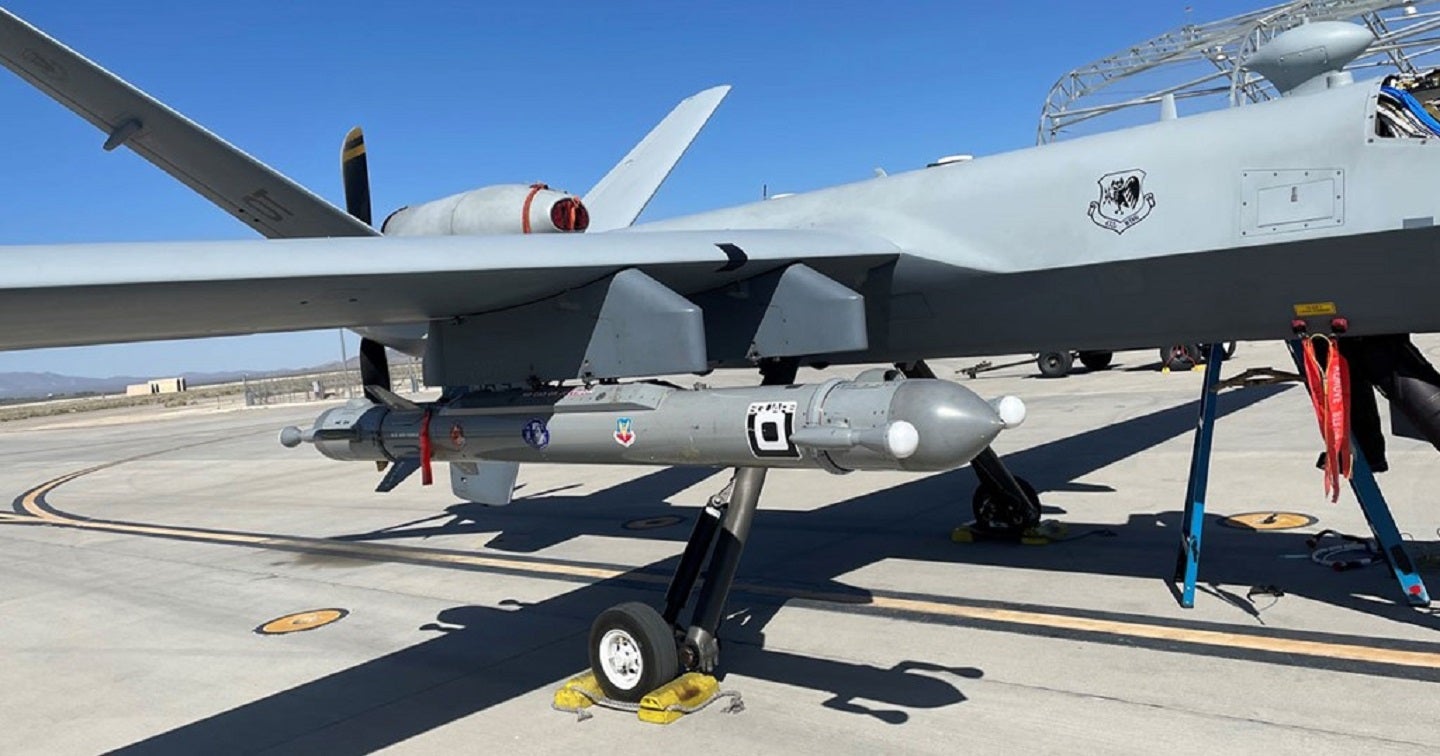John Hill

US Air Force flies with General Atmoic’s Angry Kitten electronic warfare system on an MQ-9A uncrewed aerial system. Credit: General Atomics Aeronautical Systems Inc.
The US Air Force (USAF) integrated General Atomic Aeronautical Systems Inc’s (GA-ASI) latest Angry Kitten ALQ-167 Electronic Warfare (EW) Countermeasure Pod onto an MQ-9A uncrewed aerial system (UAS) for the first time in late April, according to a GA-ASI press release on 20 July.
The Georgia Tech Research Institute (GTRI) supplied the Angry Kitten EW pod to the USAF, and the pod has flown on other US Department of Defense (DoD) systems, including F-16 fighter jets.
GA-ASI integrated the EW pod in less than nine months at no cost to the USAF by using a Co-operative Research and Development Agreement.
“It was great to see the Angry Kitten pod on an Air Force platform for the first time,” said GA-ASI Vice President of DoD Strategic Development, Patrick Shortsleeve. “Flying this EW capability on an MQ-9A demonstrates its possible use on future aircraft.”
The USAF plans to continue flying with Angry Kitten Pods over the next 12 to 24 months to develop the best Tactics, Techniques, and Procedures (TTPs), leveraging EW capabilities in support of the Joint Force and partner nations.
The MQ-9A is employed primarily as an intelligence-collection asset and secondarily against dynamic execution targets, the USAF says. Given its significant loiter time, wide-range sensors, multi-mode communications suite, and precision weapons, it provides a unique capability to perform strike, co-ordination, and reconnaissance against high-value, fleeting, and time-sensitive targets.
Global MQ-9A use will popularise Angry Kitten
According to a projection from the leading intelligence consultancy company, GlobalData, in its report on the ‘Global Military UAV Market Forecast’, global spending on GA-ASI’s MQ-9 Reaper family of Medium-Altitude, Long-Endurance (MALE) UASs will increase from $22m to $169m between 2023 and 2027.
As Europe mobilises their defence and security systems for the so-called, ‘dangerous decade’, they may come to depend on the US industrial output of military equipment and resources. With GA-ASI’s successful flight of the Angry Kitten on the already popular MQ-9A system then we can expect increased use of the pod in the future. This will only increase as Nato aspires for greater integration and interoperability.
Already, Poland has purchased a distributed interactive simulation-based systems integration laboratory from the US DoD under a foreign military sales agreement in June. A deal for a systems integration laboratory consolidates the central European country’s expanding defence programme. The facility will enable Poland to establish closer military ties with the US and Nato partners with the testing of new standard system components.
No comments:
Post a Comment